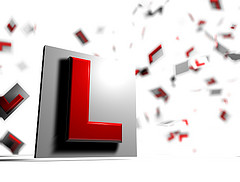 March has been another busy writing month for me but this time, it has mostly been because of so many new learning opportunities that have presented themselves to me. One of those has been being invited by Amazon to have The Vineyard in Alsace included in a Prime Reading promotion for three months. Since I signed up, my book has risen up the charts to a high point of no. 7 so far, which as you can imagine, has been fantastic to see. I am learning new things about how it works all the time and delighting in the recognition my book has been getting. I have Amazon Prime myself but I had no idea that it included books! How mad is that? So if you do too and you want to read my book for free, get yourself along to my book page here and download it! And if you could please write a review when you’ve finished, that would be even better!
March has been another busy writing month for me but this time, it has mostly been because of so many new learning opportunities that have presented themselves to me. One of those has been being invited by Amazon to have The Vineyard in Alsace included in a Prime Reading promotion for three months. Since I signed up, my book has risen up the charts to a high point of no. 7 so far, which as you can imagine, has been fantastic to see. I am learning new things about how it works all the time and delighting in the recognition my book has been getting. I have Amazon Prime myself but I had no idea that it included books! How mad is that? So if you do too and you want to read my book for free, get yourself along to my book page here and download it! And if you could please write a review when you’ve finished, that would be even better!

*
So what else have I been up to? Well, first of all, I decided to sign up to the Self-Publishing Formula Podcast’s Cover Design course. I do some design work in my day job, and I used to do design when I worked in marketing before I became a teacher many years ago. I enjoy doing it but have never taken any courses, and as I enjoy the cover design process so much, I thought it would be useful. I don’t really have any plans to make my own covers, although there might be some circumstances when I could in the future, but I thought it would help me to understand the process a bit more. And it really has. The course is delivered on behalf of the SPF team by Stuart Bache, who designs all of Mark Dawson’s covers. Stuart’s own company is called Books Covered and you will see many familiar covers there from the romance genre. You do need Photoshop to get the most out of the course but you will then get such a lot of practice in from trying to create your own covers and seeing what goes into the process. The course is still open but is a bit more expensive now. I’m still working my way through but enjoying it immensely.
Then after I heard about the Cover Design course on the podcast, they re-opened their Self-Publishing 101 course. Hopefully, you’re thinking ‘Why would you need that course, Julie?’ when you read that! Well, that’s a good point and one I had worried over myself since I first heard about the course opening late last year. It’s quite expensive and I didn’t want to make an investment like that if I wasn’t going to learn anything new. However, even after indie publishing three books now, with a couple more to come this year, there are still things I’m not doing to best effect. I haven’t really built a proper mailing list and for that you need a reader magnet (which I haven’t written yet!) and to promote that in various ways to encourage people to sign up. One of those ways is via a landing page on your website, which is when you realise that a free WordPress website doesn’t have the scope for you to do that kind of advanced stuff. It has been on my mind for a while to migrate my website again but I just haven’t done it. So really, doing this course is about helping me to work out what I still need to do to move myself to the next level, writing a checklist and then doing it! Fortunately, you can pay monthly for the course and it is still open for a few days. If you should want to take a look, the link is here. If you can’t stretch to that kind of investment, you should listen to the podcast because there are so many useful hints and tips in each episode – it really is great!
*
 Finally, this month, I went on my first ever writing retreat, just in time for the second wave of snow. It sounds terribly self-indulgent but I was given it as a birthday present from my family! Last weekend, I drove up to Warwickshire to a lovely hotel and joined about a dozen other writers at various stages in their careers for a weekend of writing and learning. The course was run by two RNA members, Alison May and Janet Gover. You can find out more about their courses here. They’re both traditionally published and have lots of experience between them.
Finally, this month, I went on my first ever writing retreat, just in time for the second wave of snow. It sounds terribly self-indulgent but I was given it as a birthday present from my family! Last weekend, I drove up to Warwickshire to a lovely hotel and joined about a dozen other writers at various stages in their careers for a weekend of writing and learning. The course was run by two RNA members, Alison May and Janet Gover. You can find out more about their courses here. They’re both traditionally published and have lots of experience between them.
Before I got the schedule, I was expecting to spend most of the weekend holed up in my room, bashing away at my laptop in isolation. However, that wasn’t the case. There was writing time, of course but there were also tutorials and workshops, which were really helpful. The most helpful ones for me were the ones on plotting and editing. I also had a one-to-one with Janet about there first three chapters of my next novel which I’m calling The Bistro for now. One of the things I struggle with is knowing where to start with the editing process when I get my first manuscript appraisal back from the RNA. It all seems insurmountable! But as a result of this course, I now have a proper plan to work to and I made a start on the plan while I was there so when I come back to it, I feel that I will be better prepared to make a start and not as daunted as I normally feel.
I learnt a lot from my fellow writers too, and the weekend was a very sociable experience that I would really recommend to you. I switched everything else off and just spent time on my writing, and that felt wonderful!
*
 I can’t finish without mentioning that I also published a new book this month! Over You (Sam’s Story) was published on 12 March, 2018, and already has a few good reviews. It means that I now have a series – the From Here to You series – and this is book 2 following on from the end of From Here to Nashville. The third and final sequel will be out around May, I hope. If you haven’t downloaded Sam’s Story yet, it’s only 99p on Amazon and tells a story of heartbreak, love and healing. You can get your copy on Amazon now.
I can’t finish without mentioning that I also published a new book this month! Over You (Sam’s Story) was published on 12 March, 2018, and already has a few good reviews. It means that I now have a series – the From Here to You series – and this is book 2 following on from the end of From Here to Nashville. The third and final sequel will be out around May, I hope. If you haven’t downloaded Sam’s Story yet, it’s only 99p on Amazon and tells a story of heartbreak, love and healing. You can get your copy on Amazon now.
If you want to know when my next release is out, why not sign up to my mailing list here?
Until next time, thanks for reading!








